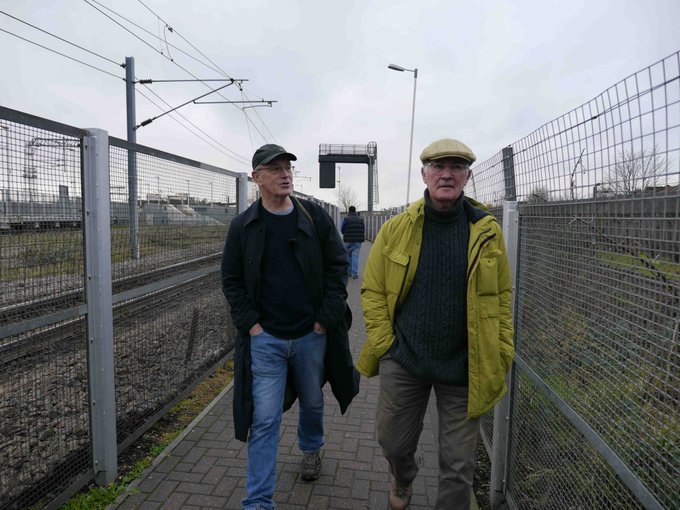Le deuxième vendredi, la veille du confinement, Iain préparait son retour à Londres. Nous avons été quelques-uns (ce n'était pas une projection mais une séance, peut-être un oracle) à regarder The Falconer (1998), la deuxième collaboration d’Iain & Chris. Il y a une connexion avec Asylum : The Falconer était conçu au départ comme un premier film dans une série qui devait s’appeler The Perimeter Fence, consacré à des figures marginales de la culture et des arts, notamment celles qui sont en dehors du "périmètre". Dans The Falconer, Françoise Lacroix est la fille du fauconnier. Elle disparait à la fin du film.
Tout devient clair. Il n'y a peut-être pas de logique, comme Iain & Chris l’avaient dit le premier vendredi au sujet d’Asylum, mais tout cela a du sens. Lacroix disparaissant à la Weldon Kees, sa voiture garée sur une jetée "sous le septième point de la M4". Matthews cherche Lacroix. La clôture du périmètre.
Beaucoup d’Horus dedans. The Falconer a commencé comme un projet de film documentaire autour de Peter Whitehead, une figure légendaire du très libertin Swinging London, mais très tôt la réalisation a muté dans un subtil travail d’exorcisme face à une entité maligne. Iain & Chris ont apprivoisé la bête. Chris parlant dans le noir, vue de profil, silhouette noire. Le fauconnier crachant sa rage vis-à-vis de Chris, car "il [Chris] désynchronise tout le temps l’image et le son". C'est Iain, le poète & conducteur du chaos, qui apporte une conclusion sereine, vers la fin du film, après la tirade de Kathy Acker, disparue un an avant la présentation du film (comme le poète Ed Dorn dans Asylum). C'est en fait Acker qui met en mots la nature sinistre du fauconnier et sauve Lacroix en l'aidant à se teindre les cheveux, en produisant une jumelle aux cheveux noirs. Un acte magique.
Ce qui est en bas est comme ce qui est en haut. Au même temps que ces deux films (en quelque sorte des jumeaux qui fondent une grammaire du gros plan, du close-up) étaient projetés en haut, London Orbital (2002) tournait en boucle en bas.
Après ces deux vendredis, l’arrêt, le confinement.
Le quatrième film, The Cardinal and the Corpse (1992), le premier de la série, nous attend à la rentrée.
Adolfo Barberá del Rosal
* Here you can listen to the postshow conversation between Iain Sinclair, Chris Petit and Adolfo Barberá del Rosal.
